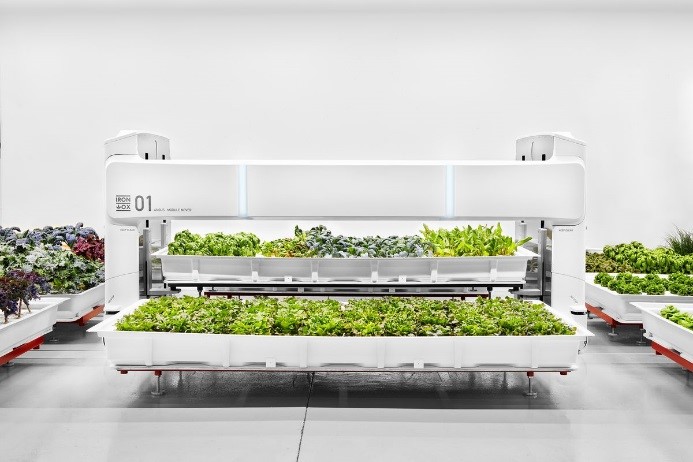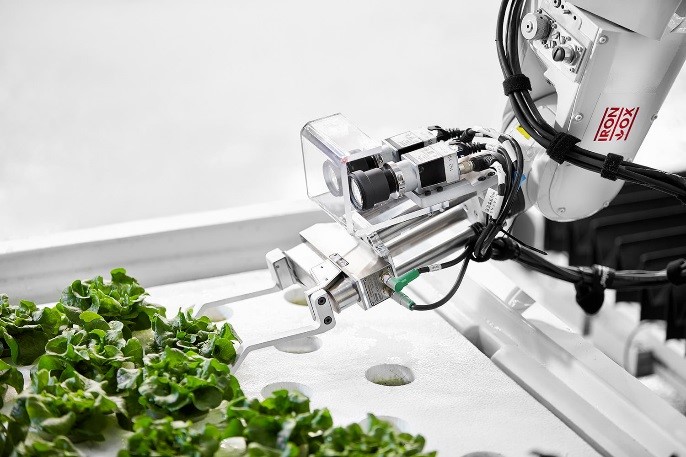AutoID & Data Capture Blog
Iron Ox: A Model for Fully Autonomous Workflows
The idea of autonomous mobile robots (AMR) and collaborative robots (cobots) in the warehouse have gained traction as machine vision, sensor, and motion technology advances. AMRs and cobots are designed to augment employee work flows making work processes easier and more efficient. Employees have growing concerns that robots will displace their jobs in the manufacturing sector as automation continues to grow; however, the reality is that there are many labor shortages in these sectors where employers seek to deploy robotic labor. These robots are traditionally thought of in the context of industrial and warehousing environments, but one US farm has integrated cobots to create a fully autonomous farm.
Iron Ox, a California based farm, has integrated AI software and robotics technology to create a fully autonomous cultivation facility. Faced with labor shortages and increased demand to produce more crops, Iron Ox was looking for alternative solutions to meet their harvest demand. Boasting a 2000 square foot facility, Iron Ox leverages AI software and robotics technology for a year-round soilless hydroponic farming process. Moving plants as the grow to optimize the space of the facility, Iron Ox claim that they can produce nearly thirty times that of traditional farming methods. Using 4ft by 8ft grow modules to plant greens and herbs, their autonomous robots conduct the farming, sensing, and cultivation. The 1000lb “Angus” as they call their autonomous machine, functions as a large AMR to navigate the facility using 3D camera and sensor technology, to lift and transport grow module for processing. Once in the processing area, autonomous robotic arms harvest the plants, gripping the pots and picking the produce. These autonomous robotic arms are designed to handle the delicacy of plants using four Lidar sensors and 3D camera technology that can identify diseases, pests, and abnormalities, which allow these robot arms to analyze the plants at a submillimeter level. Thus, Iron Ox has created a fully autonomous farming process for the planting and cultivation of produce where human touches are limited to the seeding and post-harvest elements such as picking stray leaves and packaging.

Figure 2: Iron Ox's Autonomous Robot Arm

While these autonomous robots can perform these farming duties, it is the Brain, Iron Ox’s AI software that directs and navigates the facilities’ workflows. This cloud-based AI software processes data from sensors placed around the facility and onboard the robots themselves in order to tell the robots when to act and perform their programmed tasks. While human touches are limited in Iron Ox’s facilities, the Brain is overseen by a team of plant scientists that run the software. The Brain is an integral piece to Iron Ox’s operation as the intersection of AI and autonomous robots vastly improves farming work flows. As Iron Ox plans to sell their produce to Bay Area restaurants and grocery stores as well as expand their operation with more farms in the future, Iron Ox has reimagined the farming process.
The market for AMRs and cobots is heating up as enterprises continue to automate their workflows and labor shortages continue to challenge manufacturing and distribution center order fulfilment. Honeywell Intelligrated recently announced a strategic partnership with Fetch Robotics to deploy distribution centers with AMRs in order to keep pace with growing ecommerce order fulfillment demand. This partnerships adds Fetch Robotics’ AMRs that utilized Lidar and 3D cameras to transport items through warehouses along fixed paths to Honeywell’s robotics portfolio that also recently announced a collaboration with Carnegie Mellon University to develop AI and robotics technology. AMRs and cobots in the warehouse are fueling an industrial automation revolution that increases enterprise productivity and creates more efficient workflows. While these autonomous robots are designed to augment human workflows by making tasks easier, less strenuous, and better streamlined for the human worker, warehousing of the future looks more geared towards fully autonomous capabilities like Iron Ox that boasts very little human intervention outside of operating the machines.
If you would like to learn more about autonomous robots, please check out our VDC View.
Sources:
Fig 1. Iron Ox’s Autonomous Robot Arm. Digital Image. The Verge. October 9, 2018. https://www.theverge.com/2018/10/9/17950502/robot-farm-future-iron-ox-agriculture-automation
Fig 2. Iron Ox’s “Angus”. Digital Image. Digital Trends. October 13, 2018. https://www.digitaltrends.com/cool-tech/iron-ox-opens-first-automated-farm/